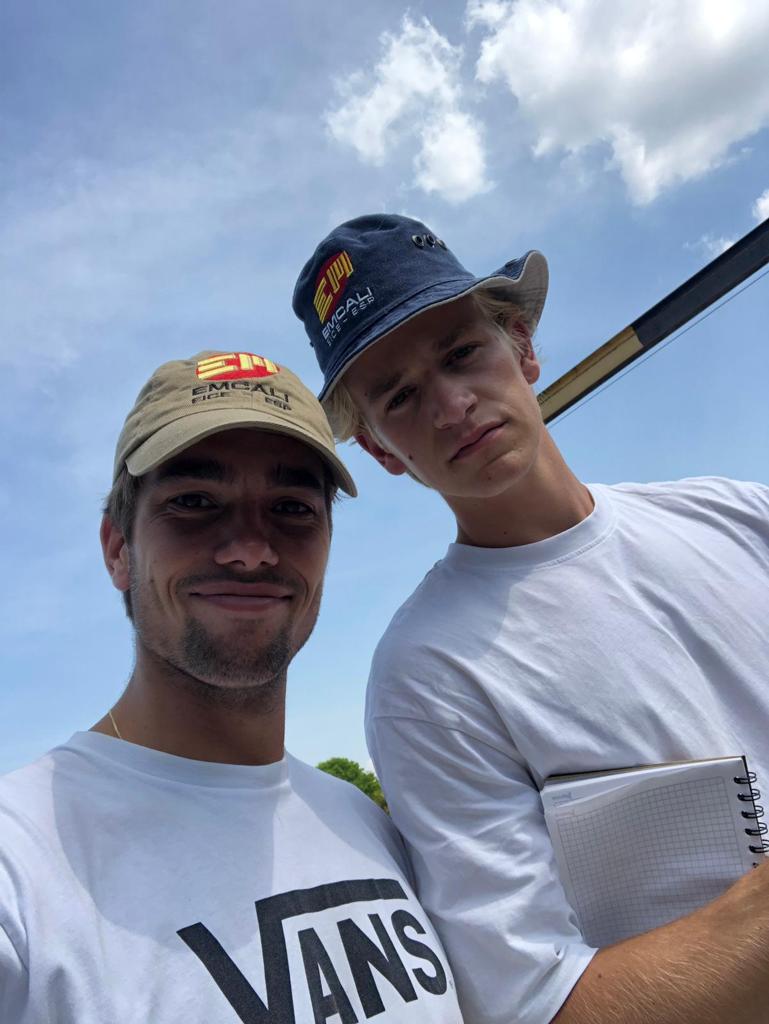Investigate and optimize the water treatment plant (WTP) Río Cauca in Cali
It was at the end of the third quarter of the study year 18/19, when I started considering what options were available for my bachelor thesis. I was certain that it would take place in the first quarter of the following academic year, however that was the only certainty I had. As I was pondering about the possibilities, a friend of mine, Filip Breeman, contacted me with a delightful proposal. He asked me if I was interested in executing a project with him in Cali, Colombia, which would apply as bachelor thesis. Well, as you might expect I was tremendously enthusiastic that such an opportunity was presented to me and I almost instantly shook Filips hand and told him ‘Count me in!’. In the weeks after the pleasant surprise, we met with our supervisor at the TU Delft Water Department, Prof.dr.ir. Luuk Rietveld, to discuss the project. We also came in contact with Dr.ir. Juan Pablo Gutierrez, who would act as supervisor and mentor during the project in Cali. Luuk and Juan Pablo explained the scope of our project during these weeks so we were able to make preparations, dive into the theoretical background concerning the project and plan our approach.
So, what was the project all about? We were to investigate and optimize the water treatment plant (WTP) Río Cauca in Cali. This WTP is used for the purification of surface water to obtain clean drinking water for a large part of the city. It is governed by public company EMCALI, which is among other things responsible for the total water distribution system in Cali. Needles to say, it is of great importance that such a WTP functions properly without to much loss of efficiency. In Río Cauca, this is not the case unfortunately.
In order to understand our research, one must first have a rough overview of the WTP. In short, Rio Cauca is designed as follows. The treatment begins with the lateral water intake from the Cauca river, from where it flows through the grit removal chamber into a raw water pumping station. The pumps deliver power to transport the water through a two kilometer long pipeline to the rapid mixing chamber, where coagulant is being applied to start the flocculation process. Next, the water is distributed to six clarifiers, where the flocculation and sedimentation take place. The sludge is being extracted from the water and transported on to the rapid sand filters, that filter the water to remove the remaining particles out of the water. In the following steps, the addition of chlorine and pH-conditioning chemicals are added to maintain secure drinking water. The last step of the train is the pumping station, from where the water is distributed to the city of Cali. Two of these treatment steps needed further examination: the grit removal chamber and the rapid mixing chamber, which were assigned to Filip and me respectively.
The rapid mixing chamber deals with two problems: the mixing gradient for the addition of coagulant is not sufficient and the flow distribution to the next treatment step is unequal. EMCALI has been working with a large consultant by the name of Idom, that has done research and has come up with possible solutions to the problems. My goal was to evaluate and verify these solutions using my own calculations and if necessary I needed to come up with different solutions. For the first part concerning the mixing gradient, I had to find the correct theoretical formulas for the calculation. Subsequently, I had to verify the theoretical outcome using values obtained during tests on-site. These tests were a fun part of the research and gave me the insight to conclude that the mixing gradient was inadequate, so I wrote a recommendation for the adjustments.
The second problem had a more theoretic approach. Idom had designed a new system of the distribution to the next treatment step. During my analysis of their design, I found out that they had made some assumptions on flow distribution and energy losses I did not agree with. The consultants assumed that equal flow would be achieved to each clarifier even though the distribution lengths and thus energy losses were unequal. Using several equations I concluded that uneven distribution would occur, unless they would use my recommendation to add specific local energy losses in the system. All of the research, findings, results and recommendations are reported in my thesis: ‘Río Cauca WTP, Optimization of the rapid mixing chamber and the flow distribution to the clarifiers’.
Coming to the end of this story, I would like to show my gratitude to a few parties. First of all, to Luuk Rietveld and Juan Pablo Gutierrez for offering me the opportunity to execute my bachelor thesis on the other side of the globe. The intensive care and assistance I received while conducting my thesis helped me immensely and got me past some tough obstacles. Next up is my friend and study partner Filip Breeman, with whom I cooperated fruitfully, but above all, who made my stay in Colombia even more enjoyable. Last but definitely not least, are the people behind the Marc van Eekeren Fund. Without the sponsors’ financial support it would never have been possible for me to travel to Colombia and therefor I am sincerely grateful.
Jochem Blok


